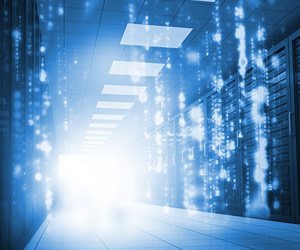With a broad range of business solutions, including ERP, SAP applications have become a critical part of many organizations’ success. Now SAP’s modernization from legacy applications to SAP S/4HANA is at the heart of what the company calls the intelligent enterprise, and as such, it is ending support for legacy SAP applications as well as non-HANA databases by 2027. Although that may seem a long way off, there are many reasons why organizations should consider beginning their migration sooner rather than later.
First, there are some fundamental differences between legacy SAP applications and SAP S/4HANA, especially in the ways organizations have extended the capabilities of SAP by writing and compiling custom business logic into SAP ERP itself. With every new ERP or other release, this custom code has to be regression tested, reintegrated, recompiled and once again tested for compatibility with SAP and other applications. The process can be so time consuming that many large SAP installations fall several release levels behind for fear of breaking their applications.
With SAP S/4HANA, all of that user-created code is no longer part of the SAP application. Instead, SAP S/4HANA takes a modern approach, leveraging external microservices through APIs, which are common to new containerized applications. By removing the code from the SAP core and exposing it with standard APIs, enterprises can monetize their custom logic if they so desire and no longer need to fear SAP upgrades, since extensions and integrations now happily reside outside the SAP code base. This is a major structural change.
Although this change offers many benefits, there are a number of challenges as well. A migration can stress limited IT resources, as many team members may be unfamiliar with modern technologies and approaches to infrastructure. As a result, companies on the road to the intelligent enterprise may lack the knowledge and tools necessary to enable a seamless transition to SAP S/4HANA.
However, a lack of resources does not minimize the need for modernization, as organizations are under constant competitive pressure to deliver a better user experience for customers and employees alike. Many will find that a partner to assist with migrating and modernizing their SAP environment can provide a needed boost to maintain their competitive edge.
Tomago Aluminium Improves SAP Environment Performance, Security with Red Hat and IBM
Learn how Tomago Aluminium, Australia’s largest aluminum smelter adopted IBM hardware, managed through Red Hat Enterprise Linux, to help the company improve security for its data and systems.
Download NowSome of the considerations for organizations as they plan their SAP S/4HANA migration include:
- Platform. This migration provides an opportunity to consider where and how to run SAP HANA and SAP S/4HANA. Many organizations have decided to move to the cloud for at least part of their infrastructure, and whether on-premises, cloud or hybrid approaches are taken, IT teams are increasingly using open source technologies beyond the underlying Linux OS. Additional consideration must be given to whether to use virtual machines, containers or both for external applications.
- Integration. SAP NetWeaver migrations often include ABAP business logic that was for the enterprise. For SAP S/4HANA, that code must be refactored to external applications that communicate with SAP’s digital core via APIs. Although this seems like a daunting task, this one-time integration greatly reduces the time required for upgrades to SAP S/4HANA in the future.
- Automation. Many SAP S/4HANA migration tasks can be automated to free up valuable IT resources to focus on bottom-line value creation rather than server configuration.
To help ease the transition, Red Hat has developed a suite of solutions designed to help make SAP’s intelligent enterprise even smarter. With a 20-plus-year history supporting SAP and all its applications on Linux, Red Hat and SAP together have championed innovation in the data center, the cloud and beyond. The following articles go into more detail about three key elements of an SAP S/4HANA migration—automation, integration and management—and provide insight and best practices that help enterprises start their migration now rather than fall behind the technology curve by waiting.

